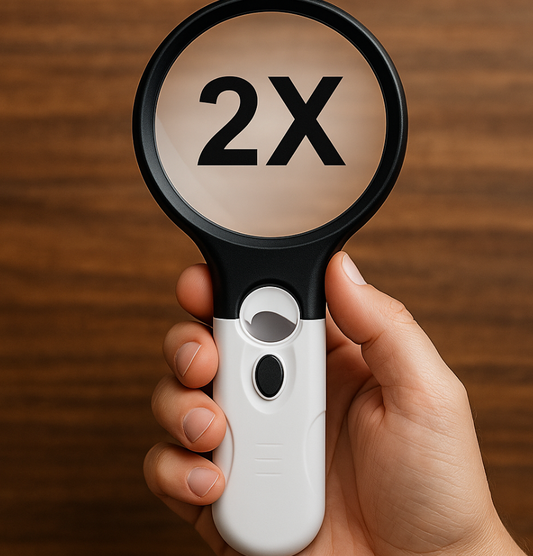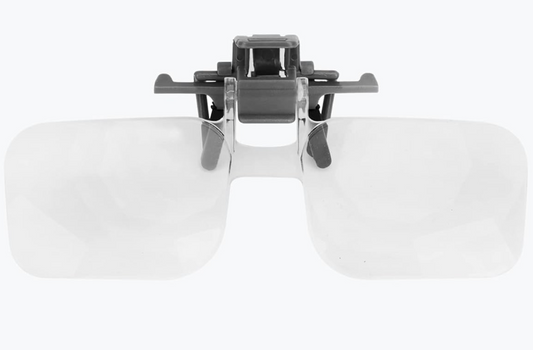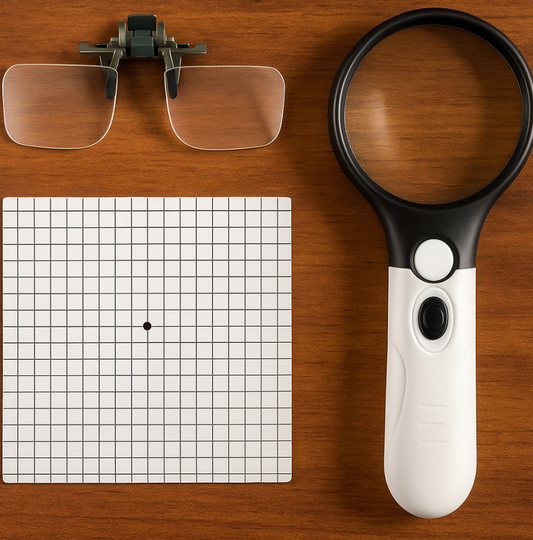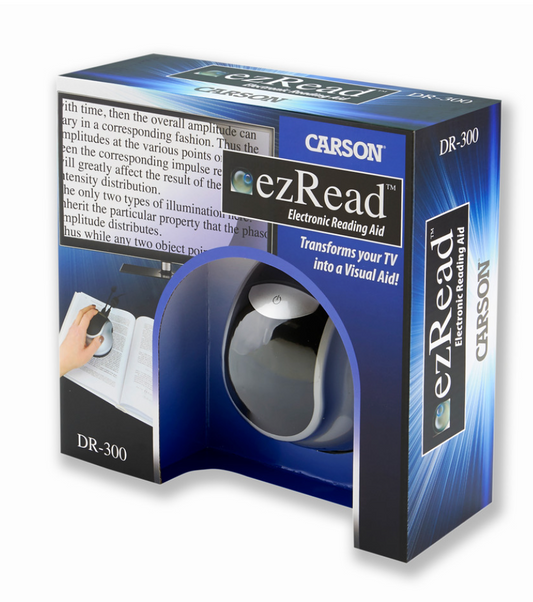Living with Glaucoma
Share
Glaucoma is an eye condition that damages the optic nerve, often due to high intraocular pressure (fluid pressure inside the eye). It is a leading cause of irreversible vision loss if untreated. The damage usually occurs gradually and is often painless, which is why many people don’t notice symptoms until significant vision loss has occurred. Peripheral vision is typically affected first, followed by central vision. Regular eye exams are essential for early detection, as timely treatment—such as eye drops, medication, or surgery—can help manage intraocular pressure and prevent further damage to vision
Symptoms and Early Warning Signs
- Common Symptoms: Gradual loss of peripheral vision, blurred vision, seeing halos around lights, and eye pain. The disease has to be far advanced to notice any symptoms.
- Acute Glaucoma Symptoms: Sudden eye pain, nausea, vomiting, and blurred vision (often associated with acute angle-closure glaucoma). This type of glaucoma happens quickly and needs immediate intervention by an eye care professional.
- Silent Symptoms: Many types of glaucoma, especially open-angle glaucoma, progress without noticeable symptoms in the early and often intermediate stages.
Types of Glaucoma
- Primary Open-Angle Glaucoma: The most common type, typically progresses slowly and often goes unnoticed until significant vision loss occurs.
- Angle-Closure (Narrow-Angle) Glaucoma: Less common but more sudden and severe; can lead to rapid vision loss if untreated.
- Normal-Tension Glaucoma: A form where optic nerve damage occurs despite normal intraocular pressure.
- Secondary Glaucoma: Caused by other conditions like inflammation, trauma, or diabetes.
- Congenital Glaucoma: Rare and usually diagnosed in infants or young children, typically due to developmental issues with the eye.
Causes and Risk Factors
- Intraocular Pressure (IOP): Elevated eye pressure is a major risk factor for glaucoma. In most cases, you will not be able to feel or notice if your intraocular pressure is high. Regular appointments with your optometrist will be able to detect if you are at risk. This is why your eye doctor may do a puff of air test or the blue light test.
- Genetics: Family history is a significant risk factor.
- Age: Risk increases with age, particularly for those over 60.
- Race and Ethnicity: African Americans, Hispanics, and Asians have higher risks of certain types of glaucoma.
- Underlying Health Conditions: Diabetes, high blood pressure, and other health issues that increase glaucoma risk.
Treatment Options
- Eye Drops: Prescription drops, such as beta-blockers, prostaglandin analogs, and alpha agonists, reduce eye pressure and are often the first line of treatment.
- Oral Medications: Medications like carbonic anhydrase inhibitors may be prescribed to help reduce intraocular pressure.
- Laser Therapy: Procedures like laser trabeculoplasty for open-angle glaucoma or laser iridotomy for angle-closure glaucoma.
- Surgical Treatments: Options include trabeculectomy, tube-shunt surgery, and minimally invasive glaucoma surgeries (MIGS), especially for cases unresponsive to other treatments. These are perfomed by an opthalmologist.
Prevention and Early Detection
- Regular Eye Exams: This is the single most important factor in diagnosing, monitoring and treating conditions like glaucoma.
- Eye Pressure Tests: Tests like tonometry to measure intraocular pressure and detect glaucoma early. These are typically known as the "puff of air test" or "blue light test" at your routine check with your optometrist.
- Optic Nerve Exams: People often research diagnostic tools, such as optical coherence tomography (OCT) and visual field tests, to monitor optic nerve health. Unfortunately, these tests are not always covered by third party or government health plans.
Lifestyle Changes and Home Care
- Exercise: Moderate aerobic exercise may help lower eye pressure and support overall eye health.
- Diet and Nutrition: Foods that may benefit eye health, such as those high in antioxidants and omega-3 fatty acids. See our post on recommended vitamins for healthy eyes and find our top recommended supplements here.
- Stress Management: Reducing stress is always a benefit - as it can impact overall blood flow and eye pressure.
- Protective Measures: Sunglasses to protect eyes from UV rays and safety goggles for activities that could cause eye injury.
Vision Aids and Adaptive Tools
- Low Vision Aids: For those who have lost significant vision, magnifying glasses, high-contrast screens, and adaptive lighting can help improve quality of life. .
- Mobility Aids: Navigating safely and maintaining independence despite their change to vision is of highest priority for patients with life altering vision loss.
Research on New Treatments and Experimental Options
- Emerging Drug Therapies: Studies on new medications that could lower intraocular pressure more effectively or slow disease progression.
- Gene Therapy: Research on therapies targeting genetic factors that may contribute to glaucoma.
- Neuroprotective Treatments: Experimental treatments aimed at protecting the optic nerve from damage, even if eye pressure is under control.
- Stem Cell Therapy: Emerging research on using stem cells to repair or regenerate damaged optic nerve cells.



